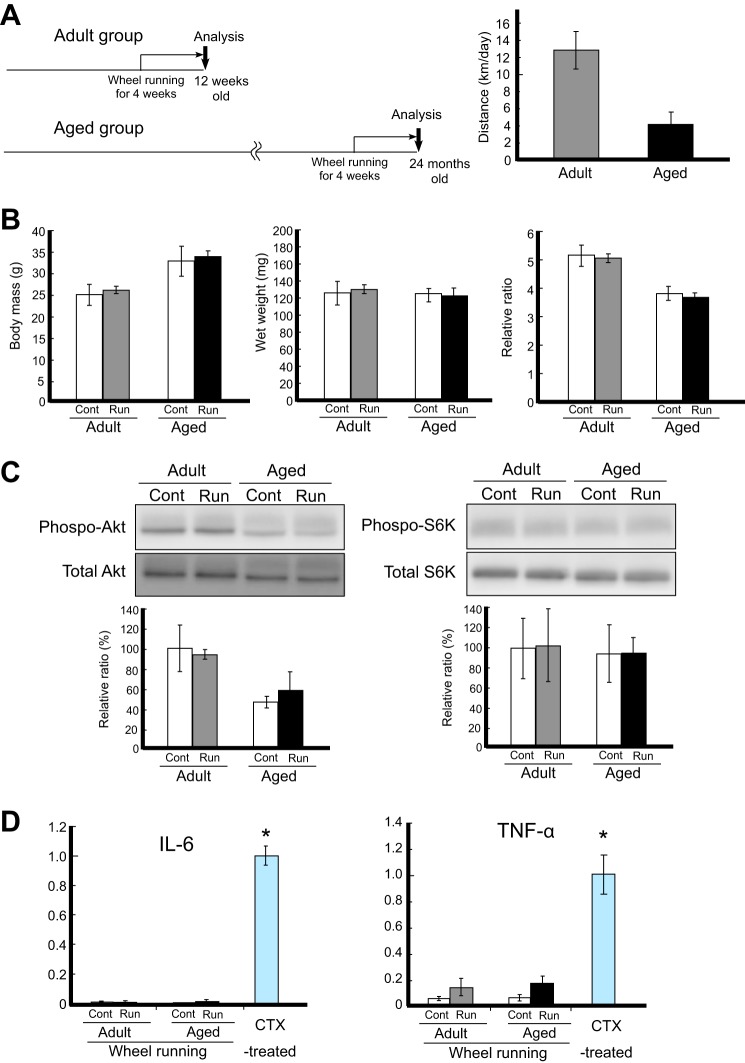FIGURE 1.
Mild stimulation of the gastrocnemius by voluntary wheel running. A, schematic representation of the experimental design in the runner group. Adult mice performed wheel running from 9 to 12 weeks of age and aged mice performed from 23 to 24 months of age. B, changes in body mass and muscle weight after exercise. The body mass (g), wet weight (mg) of gastrocnemius, and the relative ratio (mg/g) in each group were plotted. The relative ratio of the wet weight against the body mass is shown. C, representations of Akt (Ser-473) phosphorylation levels (left) and p70S6K (Thr-389) phosphorylation levels (right), as detected by Western blot analysis. Phosphorylation levels were calculated to divide the signal of the phosphorylated form against the total protein expression for Akt or S6K. The relative ratio, normalized to the signal observed for the control (Cont) adult group, is shown (bottom graph). D, expression levels of inflammatory markers (IL-6, left; TNF-α, right). The amounts of each mRNA in the gastrocnemius were measured by qRT-PCR analysis. As a positive control, the expression level in muscles injected with CTX, which induces remarkable muscle injury, was used in the analysis. The relative ratio of expression normalized to expression levels in CTX-treated muscle is shown. Signals are represented by white bars (controls in adult and aged mice), gray bars (adult runner mice), and black bars (aged runner mice). Values are expressed as the mean ± S.D. (n = 4/group). Significant differences are as follows: *, compared with all other groups (p < 0.05).

